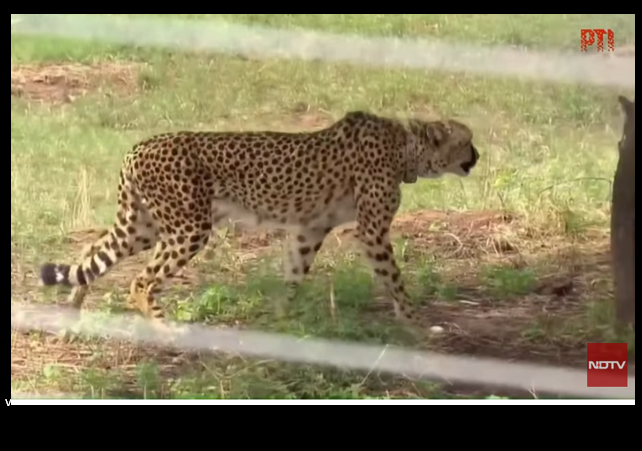Cheetahs Being Reintroduced to India, Thanks to South Africa and Conservation

After all the doom-casting about the environment and “the 6th Mass Extinction,” I thought I might offer some positive news that refutes the drama.
Thanks to conservation and real science, twelve South African cheetahs have begun a voyage to India as part of an intergovernmental agreement to reintroduce the big cats to India, where they have been extinct since the 1950’s.
They will join eight cheetahs from neighbouring Namibia that were released into the Kuno National Park in central India last year.”The 12 cheetahs… have begun their journey to India,” India’s environment minister wrote on Twitter on Friday, adding they were expected to arrive on Saturday.
South Africa will eventually ship about 100 of these big cats to India over the next decade.
The animals will end up in central India’s Kuno National Park, with protected areas home to rare and endangered animals. The cats are among the initial ones introduced in India under Project Cheetah, the first intercontinental translocation initiative of its kind.The African cheetahs that will be arriving in India are not native to the region but the incoming cats belong to the genetically distinct African subspecies which diverged from its Asiatic cousin thousands of years ago.The now-critically endangered subspecies, the Asiatic cheetah, originally roamed from the Arabian Peninsula to central India, but now only a handful of them remain in Iran and they thought to be inbred with questionable long-term viability.
There are many fun facts about cheetahs, such as they meow and purr rather than roar.
There’s nothing scary about the noises a cheetah makes. Unlike lions, which are known for their ferocious roars, cheetahs sound more like your average house cat. They meow and purr. They also make chirps and churring sounds. Listen to some of the chatty cheetahs from the Toronto Zoo.There are four big cats that roar: lions, tigers, leopards, and jaguars. They are able to make their intimidating noises because they have a ligament instead of the epihyal bone in the voice box. The ligament stretches, creating lower sounds. Cheetahs have a fixed voice box with divided vocal cords. Like “small cats,” it allows them to purr but limits the noises they can make.
Meanwhile, in this country, The Interior Department’s Fish and Wildlife Service is offering “ecogrief” sessions for bureaucrats who are traumatized by all the aforementioned doom-casting.
The class will give staffers a chance to define what they mean by ecological grief, space to examine their emotional reactions and tools to grapple with those feelings, the agency said in a note to employees in the Southwest region, where the training is offered.Those who sign up will be led to “find ways to act while caring for themselves.”“This 4-hour workshop seeks to normalize the wide range of emotional responses that conservationists experience while empowering participants to act while taking care of themselves,” the notice said. “The workshop is intended for those experiencing ecological grief and for those who wish to support them.”
The amount of money, time, and resources being used to mollycoddle emotionally frail officials is shameful. The funding would be better spent on real science and successful conservation efforts, like that which is occurring with India’s new cheetahs.
Or, perhaps instead of going to workshops, those suffering from “eco-grief” can head over to Ohio and actively participate in the clean-up efforts. There are so many healthier options to self-indulgence.
CLICK HERE FOR FULL VERSION OF THIS STORY